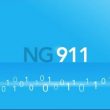Transmission lines are an important element of radio system design
(Ed.: This article originally appeared in print as "Don't overlook transmission lines.")
This series of articles explains how proper engineering can help users conserve energy and improve system performance, while reducing costs. This month's installment will concentrate on how the proper design and use of radio-frequency coaxial transmission lines as part of an overall antenna system can be leveraged to help in the savings.
The selection of transmission lines in the initial design of a communications system affects capital expenses, recurring costs such as power and maintenance, and — in some cases — the need for additional sites.
Transmission lines carry the RF signal from the transmitter to the antenna and from the antenna back to the receiver. Transmission lines come in different sizes, ranging from extremely small lines — used for mobile phones and portable radios — to extremely large lines used for high-power television stations and satellite uplink stations that are sometimes a foot in diameter. Materials used for these lines can include tin foil, copper, brass and gold. The dielectric material between the center conductor can be foam, plastic or air supported by various insulators. Exterior material is made from plastic, Teflon or bare metal.
One of the fundamental parameters of transmission lines is that, the larger the diameter of the line, the lower the loss. A second fundamental parameter is that the amount of loss for a given line increases as the frequency increases. A third parameter is that larger lines can support more power without melting or arcing over, which can damage both the transmitter and the line.
It should be noted that a larger cable is heavier, which must be factored into total weight on a building rooftop, and into wind-loading and weight-management calculations, if the cable is placed on a tower. It is the job of the design engineer to consider all of these parameters to select the proper cable that matches the system link budget, tower requirements, building requirements and cost restraints.
A transmission line that is used outside must be weather-tight, able to withstand UV rays from the sun without deteriorating, and able to be supported on the vertical run from the bottom to the top of the tower. Connectors for outside lines also must be sealed, because moisture will leak into a connection if the path is larger than the width of a single water molecule, because of capillary action. Even a connection that is sealed during the installation can become porous from the constant expansion and shrinking of the base metal from the hot and cold cycles of the temperature changes, as well as the direct sunlight.
Indoor transmission line and antenna systems are not exposed to such temperature extremes and moisture ingression problems, but they have other issues. In some buildings, the transmission lines must be run inside of special trays or conduits, or they must have special fire-retardant or non-toxic properties, so that they do not emit poisonous fumes in case of a fire. Called "plenum-rated," these fireproof or low-toxicity materials are required for most new buildings and all hospitals. In addition, when installing cables inside of many buildings, all wall penetrations must be sealed with fireproof putty, so that air cannot get through any penetration of a firewall.
Finally, when installing the mounting hardware for transmission lines, or when boring holes in walls in some older buildings, a review of the materials has to be completed to protect from asbestos exposure.
With the proliferation of wireless and radio communications, building owners face mandates or are being pressured by wireless-device users to have signals reach throughout all levels, rooms and hallways in their structures. This has turned the distributed antenna system (DAS) business into a major industry. One of the issues concerning DAS is that signals from multiple channels and bands usually are combined to keep the system from being overrun with multiple transmission lines. (We will concentrate on these systems and the complexities of their design and deployment in a future issue.)
As buildings are being built or retrofitted with low-emissivity (low-E) glass for environmental reasons, which is causing radio signals to be attenuated, in many cases by more than 20 dB. Because of this, DAS systems now are required in upper floors of buildings, which used to be covered by open antennas from the system infrastructure.
One way to conserve resources is to match the lines to the task and function of the particular design. For example, where a UHF link radio may have a received signal of -60 dBm, a smaller line and lower power can be used, and the signal at the receiver is now at -70 dBm. This level is still well above the required fade margin of the path, but the system will have lower power consumption, and smaller cables can be used. A second example would be to use larger cables on long runs, so that the effective radiated power (ERP) would be the same as if the transmitter was running at higher power.
When designing a radio-frequency system and specifying tower details, the loading of the tower is an important parameter, and the transmission line's weight and wind loading must be considered. In some instances, using smaller lines can save a significant amount of money.
The placement of the transmission lines on the tower is as important as the size of the lines. If the lines are placed across a single face, the flat-plate equivalent can create a wind load that the tower may not be able to handle. There are devices that bundle the lines to a leg, and this lowers the impact of wind loading.
From the early days of radio, the standard to confirm whether the antenna and transmission line system was working correctly was to measure the standing wave ratio (SWR) of the transmitter at the input to the transmission line. For many decades, that was the only test to the antenna system.
In the laboratory, some of the test-equipment manufacturers developed Vector Network Analyzers (VNAs) that could measure impedance abnormalities. These VNA test sets were bulky, complicated to use and were not portable. In the mid-1990s, the advances of the microprocessor and digital signal processor in radio-frequency test equipment made it possible to shrink the VNA form factor to slightly larger than a big college text book
This simplified VNA operation, and multiple manufacturers began marketing very sophisticated antenna analyzers that could be transported anywhere. Today, every installation should be confirmed in working conditions with one of these antenna analyzers by performing a test procedure called Frequency Domain Reflectometry (FDR).
Using an FDR, antennas and transmission lines can be tested to see how close the line and antenna are to 50 ohms. Any variation from 50 ohms will result in power being reflected back to the feed point of the transmission line. The mode of operation of the antenna analyzer for measuring this parameter is called the "return loss" mode. A second mode that specifies the location of the impedance abnormality is called the "distance mode," or "distance to fault." The test set will show how far a variation of the 50-ohm impedance is from the feed point.
For many years, the FDR sweeps of the return loss and the distance to fault were thought to be the ultimate solution for confirming that the antenna and transmission line were working correctly. However, the cellular industry found that lines and antennas could pass the FDR sweeps and look good, but the system performance was not what it should have been. Further investigation revealed that the variance could be traced to the installation quality.
The equipment manufacturers saw that there was a need to measure installation quality and developed test sets to do so. These test sets put out two transmitter carriers at high power, and the resultant intermodulation has a calibrated receiver on that resultant channel. If there is a quality problem, the receiver will have a signal and that is displayed to the test-set operator. These tests measure the passive intermodulation of the system, and the test sets are known as PIM testers. This subject also will be explored in more detail in an upcoming issue.
Weather can cause the performance of antennas and transmission lines to deteriorate. By using the two test sets just mentioned, you can determine if the weatherproofing of the transmission lines or antennas has failed. To prevent moisture from entering the lines at the connectors, there are numerous techniques from which to choose. The most common is to apply electrical tape as a first layer, then apply a layer of a resin-based, glue-like material before adding a final tape layer. All materials must be rated for UV protection. Another method employs the triple layer of taping and adds air pressurization. Note, however, that the air pressurization must be de-hydrated.
Lightning can enter a radio site in several ways. To keep lightning from coming down the transmission line and into the radio equipment, proper grounding kits should be used. In addition, good lightning protectors should be used. As lightning protectors absorb the energy of the lightning hits, they become less effective and can start causing problems with the signal attenuation and reflection, so they should be tested and replaced as necessary.
In summary, transmission lines are part of the system design and have a piece in the resource management of the initial system, as well as the ongoing operational costs. The selection of the proper line is important, and in some cases, the huge variety of their types and sizes can make the selection process difficult. It is very important that the line matches the system requirements, is installed correctly, and is repaired or replaced if performance deteriorates. There is test equipment that verifies whether the transmission lines are installed correctly and meet the critical requirements of the systems. Finally, because lightning and weather can cause systems and components to age, the status of the lines does need to be monitored regularly and acted upon as required.
















